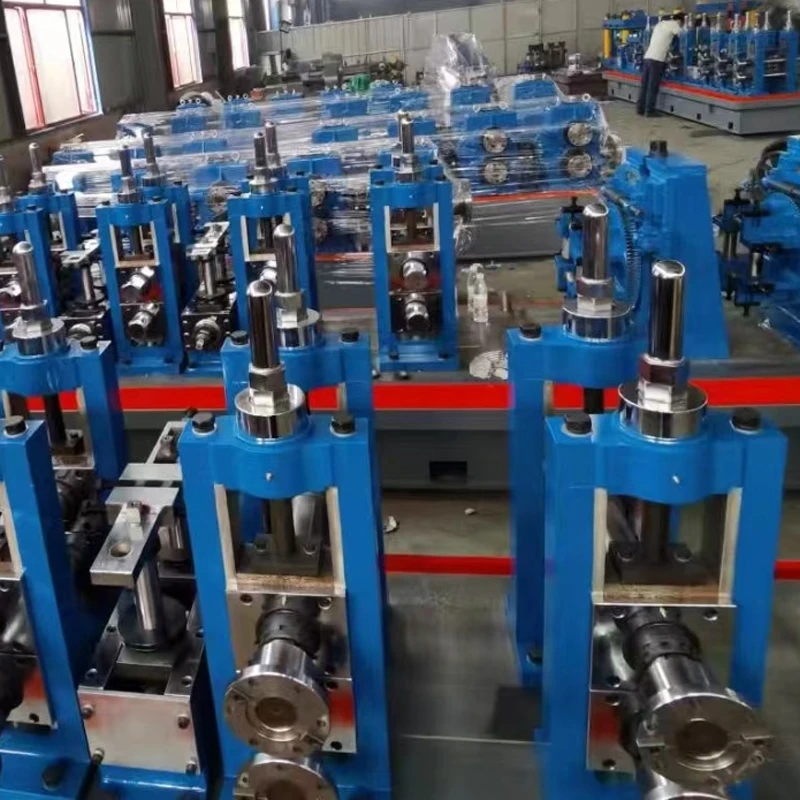Efficient Production Techniques for Innovative Pipe Making Machinery
The Evolution of Paper Pipe Making Machines
The manufacturing of paper pipes has seen considerable advancements in technology, particularly with the introduction of specialized machinery. Paper pipe making machines play a pivotal role in producing eco-friendly alternatives to traditional plastic piping, serving various industries including construction, agriculture, and packaging. This article delves into the mechanics of these machines, their advantages, and the future prospects of paper pipe production.
The Mechanics Behind Paper Pipe Making Machines
At its core, a paper pipe making machine operates through a series of systematic processes that convert raw paper material into durable, cylindrical pipes
. The machinery typically consists of several integral components a raw material feeder, a tube forming section, a drying unit, and a quality control system.1. Raw Material Preparation The process begins with the sourcing of high-quality paper rolls. These rolls are then fed into the machine, where they undergo treatment to enhance their durability and resistance to moisture. Certain machines also incorporate layers of specialized coatings to further promote strength and reliability.
2. Tube Forming The prepared paper is cut into specified lengths and rolled around a mandrel to form the desired pipe shape. This section manipulates the paper through various stages—pressing, rolling, and sealing—using adhesives that are eco-friendly to ensure a strong bond.
3. Drying After forming, the pipes require drying to eliminate excess moisture. This step is critical, as it ensures that the pipes maintain their shape and strength. Advanced machines utilize heat and air circulation technologies for efficient drying processes.
4. Quality Control The final stage involves rigorous quality control checks. Automated systems inspect the pipes for defects such as varying thickness, leaks, and overall structural integrity. Only those that pass these inspections are deemed ready for distribution.
paper pipe making machine

Advantages of Paper Pipes
The shift towards paper pipe production has numerous benefits. Unlike plastic, paper is biodegradable and contributes significantly to reducing environmental pollution. The production of paper pipes is also typically less resource-intensive, consuming lower amounts of water and energy compared to plastic alternatives.
Moreover, paper pipes can be customized for various applications. They can be produced in different sizes and with specific properties to meet the demanding needs of industries. Their lightweight nature makes them easier to handle and transport, providing logistical advantages to manufacturers and consumers alike.
Industry Trends and Future Prospects
As sustainability continues to drive innovation across sectors, the demand for eco-friendly products is higher than ever. The paper pipe industry is poised for significant growth, spurred by a growing awareness of environmental issues and regulatory measures against plastic use. Consequently, manufacturers are investing in research and development to enhance the performance of paper pipes, exploring composite materials and innovative designs that improve their functionality.
Furthermore, the automation of paper pipe making machines is another trend gaining traction. Automation reduces labor costs and increases production efficiency, enabling manufacturers to compete in a global market. The integration of smart technology, such as IoT for real-time monitoring and quality control, is also anticipated to revolutionize production processes.
Conclusion
Paper pipe making machines stand at the forefront of a critical shift towards sustainable industrial practices. As technology advances and ecological awareness grows, these machines are not just a means of production but symbols of a greener future. By embracing paper piping solutions, industries can significantly reduce their carbon footprints while meeting the increasing demand for eco-friendly materials. The evolution of paper pipe manufacturing exemplifies how machinery innovation can forge a path toward both economic and environmental sustainability. With continued advancements in technology and manufacturing processes, the future looks promising for the paper pipe industry, ensuring an enduring legacy of responsible production.
-
High Frequency Straight Seam Welded Pipe Production Line-BzZhou Xinghua Machinery Equipment Manufacturing Co., LTD.|line pipe steel&welded gas pipeNewsJul.30,2025
-
High Frequency Straight Seam Welded Pipe Production Line-BzZhou Xinghua Machinery Equipment Manufacturing Co., LTD.|High Precision&Automated SolutionsNewsJul.30,2025
-
High Frequency Straight Seam Welded Pipe Production Line - BzZhou Xinghua Machinery Equipment Manufacturing Co., Ltd.NewsJul.30,2025
-
High Frequency Straight Seam Welded Pipe Production Line-BzZhou Xinghua Machinery Equipment Manufacturing Co., LTD.|Precision Welding, High EfficiencyNewsJul.30,2025
-
High Frequency Straight Seam Welded Pipe Production Line|BzZhou Xinghua|Precision Welding&EfficiencyNewsJul.30,2025
-
High Frequency Straight Seam Welded Pipe Production Line - BzZhou Xinghua|Precision Engineering&EfficiencyNewsJul.30,2025


